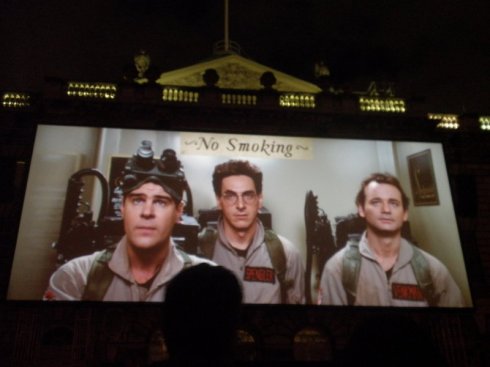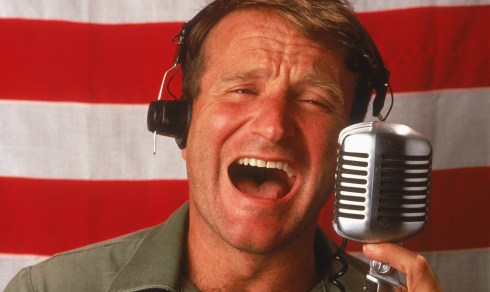What a sad fortnight for film. Robin Williams, Lauren Bacall, and now Sir Richard “Dickie” Attenborough has headed off to the great Green Room in the sky. Though young Americans may know him only as “that old bloke from Jurassic Park”, he was dark and brilliant in Brighton Rock way back in 1947, and became known as an actor’s director. Those who think of him only as a sentimental old “luvvie” are missing a trick.
In my third month as Time Out’s editor, in April 1992, I put Attenborough’s Charlie Chaplin biopic on the cover. This is an extract from the location piece and interview by our Senior Editor, Brian Case:
<<Attenborough is known for his tenacity. His manner – “Oh, you are so divine. Bless you, darling” – contrasts with the crimson vehemence of his face with its glaring nostrils. It had taken him 20 years to raise the money for Gandhi for which he deferred his own salary, and mortgaged his art collection to keep going. Chaplin’s widow, Oona, gave him total approval to film the autobiography, although she’d been turning down two offers a day since her husband’s death.
“It is not a hagiography, not sycophantic,” says Sir Dickie. “It is not a whitewash. The young girls? Yes. His ruthlessness? Yes. He was absolutely blinkered in his life in terms of his work. He was bound to be like that because, between the ages of five and six, he was in the workhouse and at 12 he had to commit his mother. For the first 14 years of his life he lived on the edge of starvation, digging up fish heads from the mudflats and taking them home for his mother to boil because she was so unbalanced that she could no longer take in sewing and earn any money.”
Financing Charlie had proved the usual endurance test. There was no British money, of course, and Universal suddenly put the project into turnaround. Over that weekend, Sir Dickie – a master of the pitch who once sang and danced his way through Oh! What A Lovely War to convince Paramount’s Charlie Bludhorn to invest – landed Carolco.
Sir Dickie’s other problem had been finding the right actor to play Chaplin from 19 to 83. Nijinsky described him as a great dancer and Olivier as the greatest actor of all time. “Anyone can do The Tramp,” says Sir Dickie. “We had to find that thing behind the eyes that gives the idea that there’s a tremendous amount going in the mind. Very difficult to convey. You think of the number of movies that have conveyed genius. Paul Muni once or twice, Charles Laughton once or twice – there’s not many. This boy has it.” [The “boy” in question, of course, was a then little-known young actor called Robert Downey Jr.]
In the background, Downey is practising tricks with his hat. Already, he gives the impression that objects have a life of their own, and a capacity for mischief. “Yes indeed,” agrees Sir Dickie, “and one of the great figures involved with that was Olivier. He fenced with the props in his particular sequence and then he would adopt some and thrust out others as if there was an antipathy, an aggressiveness towards them – an inkstand or something that he didn’t like.
“Props were absolutely vital to him. Robert [Downey Jr] is like Ben Kingsley when we went to India – for a year and a half he lived, breathed, talked, felt Gandhi, so that he was almost incapable of doing something which in character terms was incongruous.”>>
Even from this short extract, you get a glimpse of the determination and drive needed to shepherd a big-budget movie to completion, particularly in a country lacking any major studios; but also of the love and care and understanding with which he approached the craft of acting. Attenborough’s movie career spanned 65 years, from acting in In Which We Serve in 1942 (he has 78 acting credits to his name) to directing Closing The Ring in 2007. We may not see his like again.







